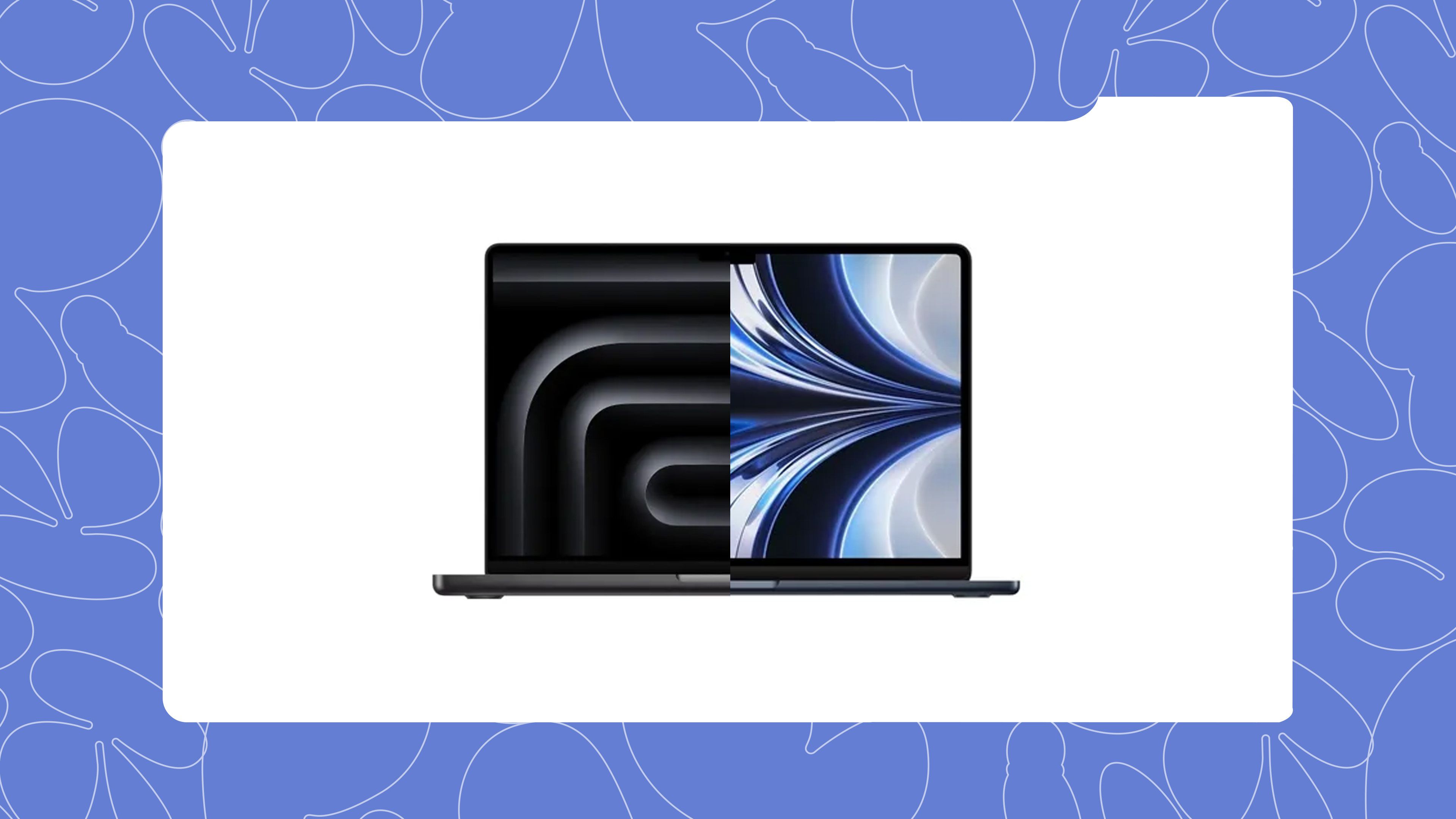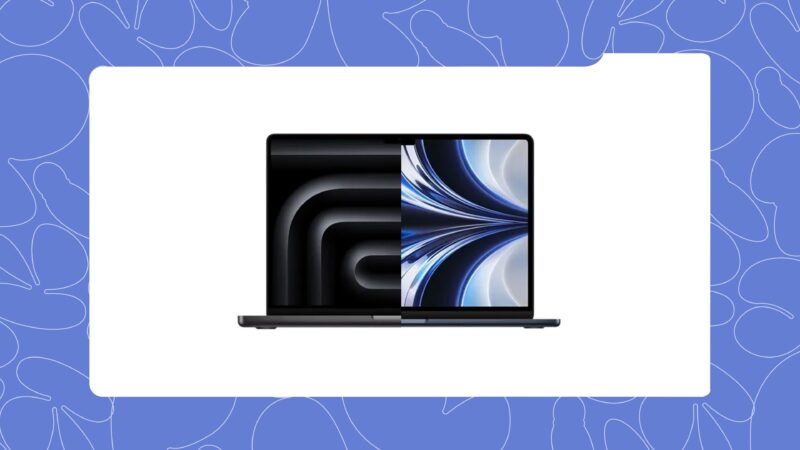
If you’ve already decided that your next computer will be a MacBook, the big question that comes next is simple: MacBook Pro or MacBook Air? Both are Apple’s most popular laptops, but the difference between the MacBook Pro and MacBook Air goes far beyond the names. One is known for portability and simplicity, while the other is seen as the powerhouse for professionals.
Choosing the right model can feel confusing, especially when both look similar on the outside. This guide breaks down the MacBook Pro vs MacBook Air comparison in detail, covering design, performance, display, ports, battery life, and price, so you know exactly which MacBook suits your needs.
The MacBook Air is Apple’s lightweight laptop designed for portability and everyday use. It comes in 13-inch and 15-inch versions, runs on Apple’s M-series chips (M2, M3, and the latest M4), and is the top-selling Apple laptop. The Air is slim, portable, and efficient, making it a reliable choice for students, office users, and travellers.
The MacBook Pro, on the other hand, is built for performance. Available in 14-inch and 16-inch models, the Pro includes more powerful chip options (M4, M4 Pro, and M4 Max), advanced cooling systems, and a brighter display. It’s targeted at professionals who need high-level computing power for video editing, music production, programming, or design.
Design and Portability
When it comes to design, the MacBook Air is thinner and lighter. At just over a kilogram, it’s easy to slip into a backpack or carry around during a busy day. The Air’s flat-edged design, slim profile, and MagSafe charger add to its convenience. For those who move around a lot; students, travellers, or remote workers, the MacBook Air feels like the natural option.
The MacBook Pro is thicker and heavier, but this size brings advantages. The Pro has a stronger cooling system and more internal space, which supports higher performance. It also comes with larger screen options (14-inch and 16-inch), making it better suited for those who spend long hours working on visual or technical tasks.
Performance and Power
Performance is the area where the difference between the MacBook Pro and MacBook Air becomes most noticeable.
The MacBook Air uses Apple’s standard M-series chips. With no internal fan, it runs silently but can slow down under heavy workloads due to heat (a process known as thermal throttling). For everyday activities like web browsing, Netflix, Zoom calls, word processing, and even light editing in apps like Photoshop or Final Cut Pro, the Air handles things smoothly.
The MacBook Pro is in another category. Thanks to active cooling and chip options like the M4 Pro and M4 Max, it can sustain high performance over long periods. Video editors can cut through complex 4K or even 8K projects, developers can run large builds, and designers can manage multi-layered files without slowdowns. The dedicated media engines in the Pro also mean faster rendering times for videos.
So, while the Air is capable for casual and semi-professional use, the Pro is the machine for those who need consistent power.
Display and Graphics
Displays are another key point in the MacBook Pro vs MacBook Air debate.
The MacBook Air has a 500-nit Liquid Retina display, bright enough for indoor use and occasional outdoor work. It’s sharp, colourful, and perfectly fine for daily activities. However, it’s limited to a 60Hz refresh rate, which is acceptable for casual users but may feel less fluid to those used to faster screens.
The MacBook Pro sets a higher standard. With the Liquid Retina XDR display, it offers up to 1,600 nits peak brightness and a ProMotion 120Hz refresh rate. The Pro’s screen is designed for professionals who work in HDR video, photography, or design. There’s also an optional nano-texture display to reduce reflections.
If you mainly stream films, browse, or write documents, the Air’s display is more than sufficient. But if your work depends on colour accuracy and smooth visuals, the Pro delivers a noticeable improvement.
Ports and Connectivity
Apple’s approach to ports also shows the difference between the MacBook Pro and MacBook Air.
The MacBook Air comes with two Thunderbolt 4 ports, a MagSafe charging port, and a headphone jack. It’s simple, but for users who connect multiple devices, adapters may be necessary.
The MacBook Pro offers more flexibility: three Thunderbolt 4 or Thunderbolt 5 ports (depending on the model), HDMI, an SD card slot, MagSafe, and a headphone jack. These options are invaluable for photographers, videographers, and professionals who regularly connect external drives, cameras, or monitors.
Battery Life and Charging
Battery life is another reason why many people lean towards the MacBook Air. Thanks to its efficiency, it can last a full working day without needing a charger. It also uses a compact 35W charger, which is light to carry around.
The MacBook Pro has an impressive battery as well, especially in the 16-inch model, but its larger charger makes it less convenient for travel. Still, for heavy-duty users who push their machine with editing or coding all day, the Pro’s battery remains dependable.
Speakers and Camera
Sound and video quality also differ between the two. The MacBook Air has solid speakers that work well for everyday listening, but the sound lacks depth compared to the Pro.
The MacBook Pro, with its larger body, delivers fuller sound with more bass and volume, enough to fill a small room. For anyone editing music, watching films, or presenting work, the Pro’s speakers provide a more immersive experience.
Both laptops share the same 12MP webcam with Centre Stage, which tracks your face during video calls. While functional, it isn’t a huge step up in image quality, but it does the job.
Price and Value
Pricing is where many people make their decision in the MacBook Pro vs MacBook Air debate.
The MacBook Air is more affordable, offering strong performance at a lower cost. It provides incredible value for students, remote workers, and anyone who doesn’t need advanced processing.
The 15-inch MacBook Air with Apple M3 chip is thin, light, and built for all-day use with up to 18 hours of battery life. It comes with 16GB of memory and 256GB of SSD storage, giving you speed and smooth multitasking. The Liquid Retina display, six-speaker sound, and sleek design make it perfect for work, study, and entertainment.
The MacBook Pro is considerably more expensive, especially with M4 Pro or M4 Max configurations. However, for professionals who rely on their laptop for income, the Pro’s performance can quickly justify the higher price.
This 14-inch MacBook Pro is powered by Apple’s M3 chip (8-core CPU, 10-core GPU) and offers a spacious 1TB SSD, ideal for storing large files and applications. It features a Liquid Retina XDR display, delivers up to 22 hours of battery life, and includes ports such as Thunderbolt / USB-4, HDMI, SD card slot and MagSafe charging.

